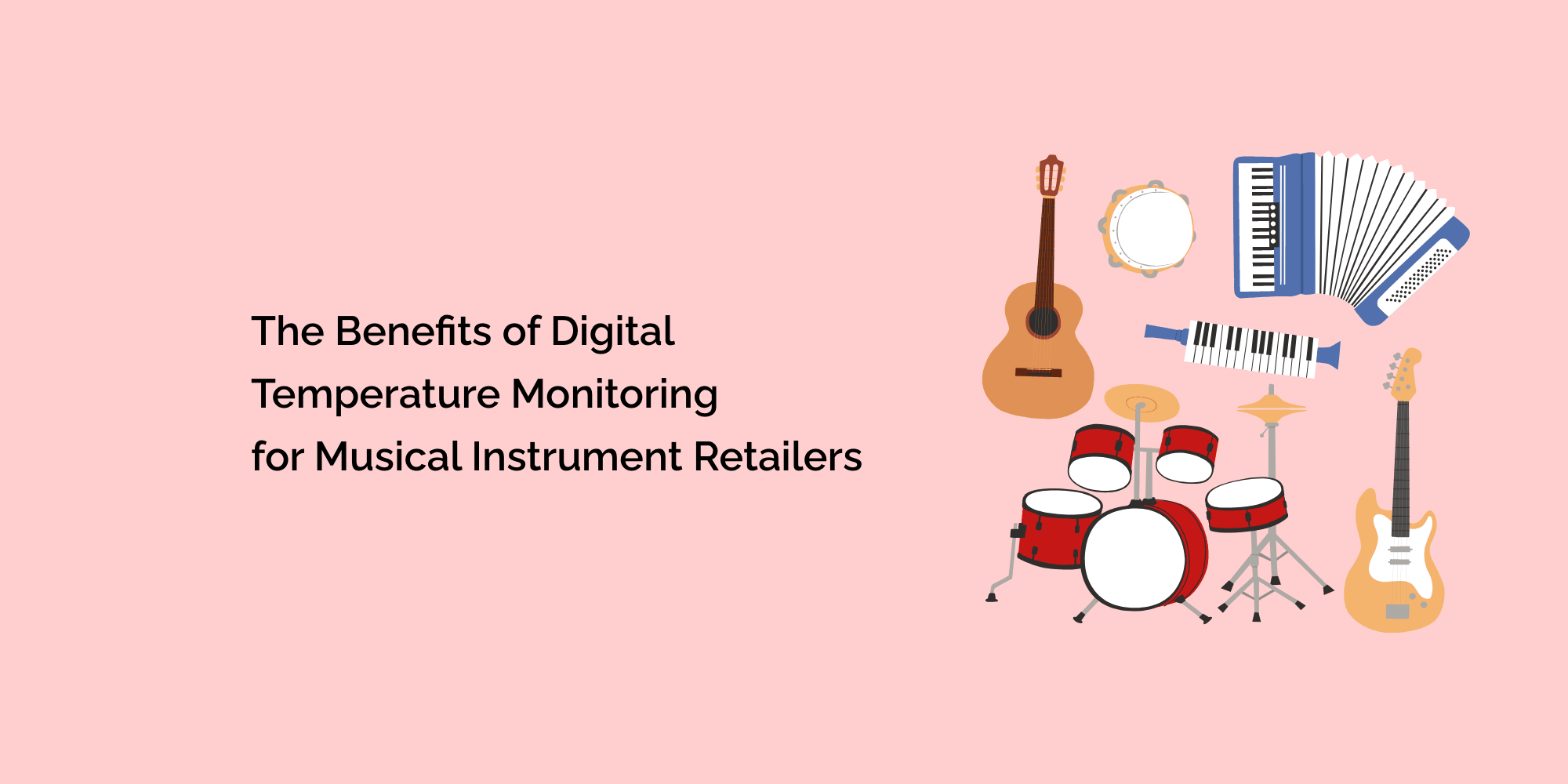Maintaining optimal temperature conditions is crucial for preserving the quality and performance of musical instruments, especially in a retail environment. Temperature fluctuations can lead to structural damage, tonal changes, and diminished value. Traditional temperature monitoring methods may fail to provide accurate and timely information for instrument retailers. In this detailed blog, we will explore the benefits of digital temperature monitoring for musical instrument retailers. By leveraging digital technologies, retailers can ensure the instruments in their inventory are stored in suitable temperature conditions, protecting their investment and providing customers with tools that are in optimal condition.
The Significance of Temperature Control in Musical Instrument Retail
Temperature control is vital for musical instrument retailers as it directly impacts instrument quality and customer satisfaction. Maintaining stable temperature conditions helps preserve the integrity, tonal characteristics, and value of instruments, meeting customer expectations for high-quality tools.
Limitations of Traditional Temperature Monitoring Methods
Traditional temperature monitoring methods, such as manual readings or basic thermometers, have accuracy and real-time monitoring limitations. They often lead to delays in data collection and fail to provide timely alerts for temperature deviations.
Introduction to Digital Temperature Monitoring Solutions
Digital temperature monitoring solutions offer advanced capabilities for instrument retailers. Wireless sensor networks provide real-time monitoring and instant alerts. Cloud-based monitoring platforms enable data analysis, historical tracking, and integration with inventory management systems, facilitating efficient instrument tracking and control.
Real-time Monitoring and Instant Alerts
Digital temperature monitoring systems offer continuous updates on temperature conditions. They provide instant notifications for temperature deviations, enabling prompt action to protect instruments from potential damage.
Data Analysis and Historical Tracking
Digital monitoring solutions allow for data analysis and historical tracking of temperature patterns. Retailers can identify trends and anomalies, enabling proactive maintenance and informed decision-making regarding instrument storage and preservation.
Compliance with Quality Standards and Regulations
Digital temperature monitoring helps retailers adhere to manufacturer specifications, quality standards, and regulations. Retailers can mitigate liability issues and warranty claims by demonstrating instrument care and quality assurance.
Remote Monitoring and Multi-location Management
Digital monitoring systems offer centralized control and monitoring of temperature conditions across multiple retail locations. Accessible data and reporting facilitate efficient management and oversight.
Streamlined Inventory Management
Digital temperature monitoring streamlines inventory management by ensuring accurate stock management and timely identification of temperature-sensitive instruments. Retailers can prevent losses and maximize inventory efficiency.
Customer Satisfaction and Trust
Delivering instruments in optimal condition enhances customer satisfaction and builds trust. Digital temperature monitoring ensures instrument longevity and performance, leading to customer success and repeat business.
Scalability and Cost-effectiveness
Digital temperature monitoring solutions are flexible and scalable, catering to retailers of all sizes. They offer cost savings in instrument preservation, reducing potential losses and enhancing instrument sales, resulting in a positive return on investment.
Implementation Considerations and Best Practices
Retailers should choose the right digital temperature monitoring system that meets their needs. Strategic placement of temperature sensors in instrument storage areas is crucial for accurate readings. Regular maintenance and calibration of the monitoring system ensure reliability and precision.
Certainly! Here are some frequently asked questions (FAQs) regarding the benefits of digital temperature monitoring for musical instrument retailers:
How do data analysis and historical tracking benefit instrument retailers?
Data analysis and historical tracking help instrument retailers identify temperature trends, patterns, and anomalies. This information enables proactive maintenance, decision-making regarding instrument storage and preservation, and adherence to quality standards. It also helps retailers demonstrate instrument care and quality assurance, mitigating liability issues and warranty claims.
Can digital temperature monitoring systems facilitate multi-location management?
Digital temperature monitoring systems offer centralized control and monitoring across multiple retail locations. They provide accessible data and reporting, making it efficient for instrument retailers to manage and oversee temperature conditions in different areas.
Conclusion
Digital temperature monitoring provides significant benefits for musical instrument retailers. Real-time monitoring, instant alerts, data analysis, and historical tracking enable efficient instrument preservation, inventory management, and compliance with quality standards. Remote monitoring and multi-location management facilitate centralized control and accessible data. Customer satisfaction, instrument longevity, and trust-building contribute to retailer success. Digital temperature monitoring solutions are scalable and cost-effective, offering a positive return on investment for retailers of all sizes. By embracing digital technologies, instrument retailers can enhance instrument quality, maximize inventory efficiency, and deliver instruments in optimal condition, leading to a thriving business and satisfied customers.








